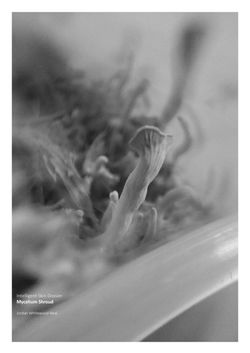Mycro-Community
Mycro-community -
A social archive of contingent civic space
Responding to the abandoned nature of Ramsgates former Pleasurama site, Mycro-community acts as an architectural polemic against conventional urban development. Through the exploration of mycelium, the roots of fungus, and it’s growth, characteristics, and materialistic possibilities in construction components, the building acts as a self sustainable organism floating above the ground.
Ramsgates increasing loss of community based infrastructural programs has led to a sense of lost identity and the degradation of active public space. My building intends to utilise mycelium as a catalysts for the preservation, production and ossification of community infrastructure on an internal, local, and urban level.
Supported delicately by the ground plane and the cliff, the technical super structural approach allows the floors and volumes to float, leaving the bottom level as an open plaza, encouraging access, openness and providing a constant temporality on the site. Through a permutable modularity, the structure is capable of linear but variable expansion across the site, enabling the addition of socially informed civic spaces.
The exterior approach and interior atmosphere of the building is informed by the intelligent skin, using an inner and outer layer of polarised glass, with mycelium growth contained within its vacuum, the skin provides both a micro environment within itself to encourage growth but also controls the filtering of light in the building, which at night then allows interior light to illuminate the building, emphasising it’s presence in the surrounding landscape.
The archive is one in flux, functioning contingently at the scale of both mycelium spores and entire structural spaces. The mycelium’s compostable nature allows the spaces produced by it to have a spatial temporality, but materialistic life cycle in which fragments of a deconstructed space are recycled, researched and archived within the building. The project begins to question the definition and scale of an archive, with its growing taxonomy of socially produced spaces, the collection weaves within the existing fabric, ossifying and unifying, attempting to not just to introduce new spaces, but to collect and preserve the infrastructural substrate that it feeds off.
Using mycelium enables the community to become physically involved with the design, production and occupation of their own public spaces and buildings, ossifying their own urban landscape and creating a contingent network of infrastructure which will support a regenerating town.


 |  |  |
|---|---|---|
 |  |  |
 |  |  |
 |  |  |
 |  |  |
 |  |  |
 |  |  |
 |  |  |
 |  |  |
 |  |  |
 |  |  |
 |
Intelligent Skin: Mycelium Shroud
 |  |  |
|---|---|---|
 |  |  |
 |  |  |
 |  |  |
 |  |  |
 |  |  |
 |  |  |
 |  |  |
 |